Tesla’s folly – why Wardenclyffe didn’t work
“For a successful technology, reality must take precedence over public relations, for nature cannot be fooled.” – Richard P. Feynman
“…where dreams alone are blueprints, nightmares result.” -Theodore Dalrymple
“folly: noun ˈfälē 2. A costly ornamental building with no practical purpose, especially a tower or mock-Gothic ruin built in a large garden or park.” – Oxford English dictionary
Tesla’s life is a story of a meteoric rise to international prestige followed by an equally dramatic retreat into public shame, depression and loneliness. The turning point seems to have occurred during Tesla’s time in Colorado Springs (May 1899 – January 1900). It was during this point that he failed to properly confront reality. Denial of his failures led to further failure and further denial – a downward spiral which eventually led Tesla to a mental breakdown. This essay explores where Tesla went wrong.
What distinguished Tesla from other great scientific minds of his age was his ability to dream. Tesla had an uncanny ability to imagine how the human condition could be changed by technology. Tesla’s inventions — the brushless AC motor, wireless lighting, the radio controlled boat — all began with as a clear concept in his own mind of how they would benefit humanity. Tesla explained his invention process as taking place completely within the visualization apparatus of his own mind. Once Tesla had the concept of an invention fully visualized he then undertook the hard work of bringing it into reality, by running the necessary calculations and building and testing prototypes. This approach contrasted from that of many other scientists and engineers, who were more “tied to the bench” and more myopic in their thinking. Tesla’s imagination was, quite simply, unbounded.
Up until 1899, this approach worked well for Tesla. His greatest invention, the brushless AC motor, began with a realization that such a motor would be highly superior to the motors of his day. He also dreamed of an elegant AC system, free of AC-DC and DC-AC converters, to power his motor. Despite an objection from his teacher that a brushless motor would be impossible, Tesla refused to relinquish his dream and carried it around for years before eventually stumbling upon a way to achieve it.
In addition to Tesla’s psychological disposition towards dreaming, it is important to also consider the society which Tesla interacted with during this time. In the economic sphere, electrification had created an investment and startup bubble of even greater frenzy than the heyday of the .com bubble of the 1990’s. Billion dollar industries arose out of thin air and the economy was lifted into a “long wave” of enhanced growth that would last for decades. The societal change brought about by electrification was literally one from dark to light. This rapid change created a zeitgeist of technological optimism that can scarcely be comprehended today, since everyone alive today was born with electricity. The sheer magnitude of technological change during that time period boggles the mind. Tesla thrived in this era of technological optimism and his ideas were eagerly picked up by the leading newspapers of the day. Tesla was close friends with several journalists and actively took part in the promotion of his ideas in the press, hoping that investors would seek him out as a result. In the sensational coverage Tesla received, fact and fiction were blurred and Tesla was lauded for having demonstrated inventions he had not yet actually built. This public prestige made Tesla even more sure that even his most grandiose dreams could be realized.
In 1899, Tesla’s big dream was wireless power. Tesla had already demonstrated wireless transmission of power over small distances in his lab. Now, Tesla imagined constructing special stations which would send electricity and communications to the entire globe, an idea he called the World Wireless System. His ideas were lauded the press, for instance, for example:
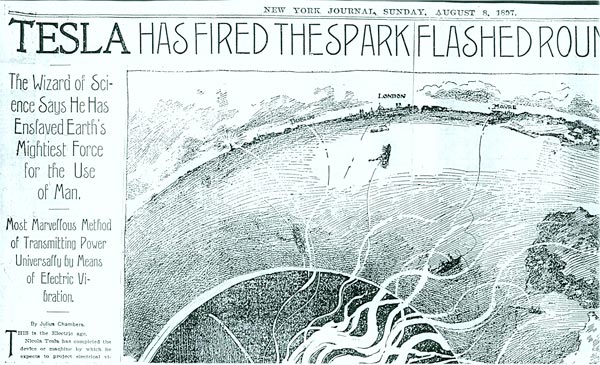
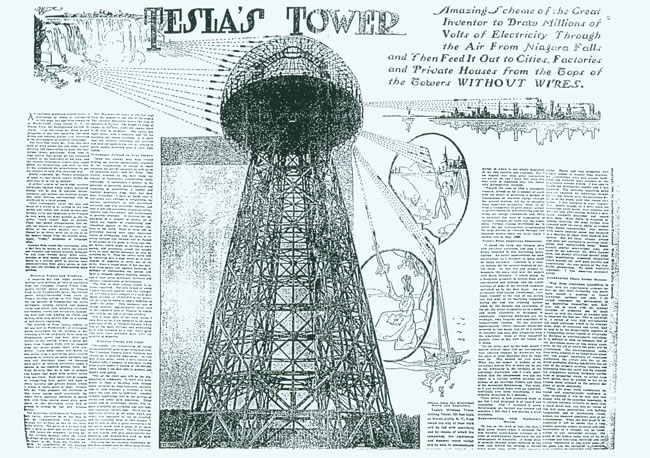
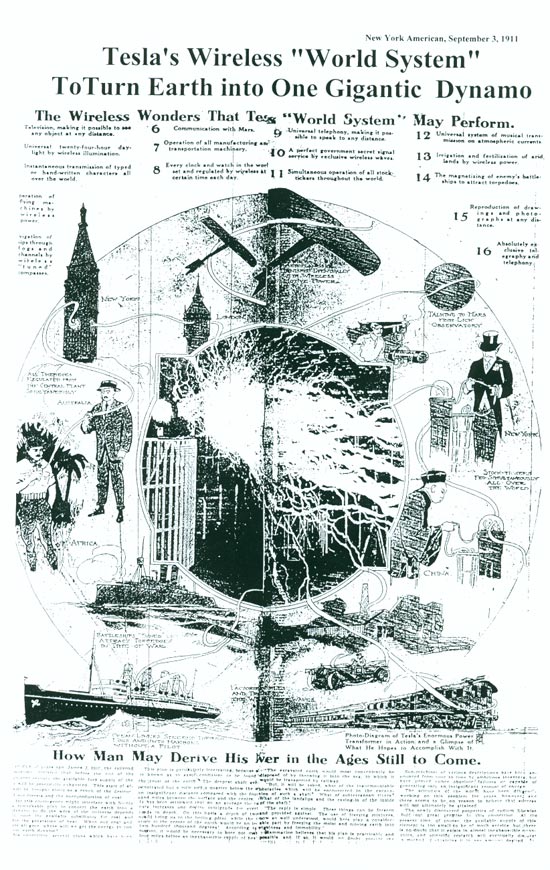
These stories were tabloid stories which took Tesla’s proclamations and ran with them, part of the sensational yellow journalism of that era (Carson, 408). In some cases, Tesla was friends with the journalists themselves and fully endorsed their publication.
The second image (“Tesla’s Tower”) captures the now popular conception of Tesla’s system of wireless electricity – a large tower ‘beams’ electrical energy to receivers – for example, a woman with an umbrella, or a person on a ship. The first objection which any person who has taken Physics 102 may raise to this idea is the fact that the energy of electromagnetic waves per unit area outputted by an antenna decreases as the inverse square of the distance from it. In other words, the energy contained in electromagnetic waves typically spreads out and dissipates very rapidly. As an example of this, consider a cell phone, which is constantly sending out electromagnetic waves in all directions. The amount of electromagnetic energy passing through your hand when it is 1 meter from the cell phone is 10,000 times smaller than when it is 1 cm from the phone. When your hand is 1 km from the phone, the amount of energy passing through it is 10,000,000,000 smaller.
Tesla was completely aware of this elementary fact. To overcome this limitation, Tesla entertained three possible workarounds in his imagination:
The first workaround was to utilize resonance. Like sound waves, electromagnetic waves can resonate with cavities or material bodies, producing standing waves. When a standing wave is formed, waves traveling in opposite directions interfere, adding constructively at some points and destructively in others. The points of maximal constructive interference are called nodes. Tesla imagined that electrical waves must be able to resonate with the Earth, both inside the Earth and in the atmosphere, which can be thought of like a ‘cavity’ between the Earth and outer space. He imagined that receiving stations could be placed at the nodes of such resonances, where the constructive interference would greatly enhance the amplitude of the waves. These local stations would then presumably transmit signals to receivers like the umbrella or through conventional wires.
The next workaround Tesla envisioned was to “flip radio on its head” (Carson, pg 210). During Tesla’s day, waves of current and waves in the electromagnetic field were often thought to be two aspects of an underlying phenomena – “electrical energy”. To many electrical experimenters, electromagnetic waves were often thought to be waves of current, traveling through the atmosphere. Likewise, waves of current were often thought of as electromagnetic waves, but confined to wires. In fact, the two are physically distinct phenomena, but intimately coupled through Maxwell’s equations. During his time, the transmission of a radio signal from a source to a receiver was often thought of as an electrical circuit. Electrical energy traveled through the air from source to receiver, and then returned directly via currents through the Earth. This way of thinking about transmitting electrical signals was intuitive and meshed with the way people thought about telegraphy. (Hence the name “wireless telegraphy”.) This way of thinking is not at all rigorous, however, since with any transmitter the vast majority of electromagnetic energy is lost into outer space and only a small amount is picked up by the receiver. Having a ‘complete circuit’ is also not at all necessary as it is with a telegraph. However, using this way of thinking, Tesla imagined flipping conventional radio on its head – the signal would be transmitted through the Earth, and the electrical energy would return via current in the air. Based on his experiments with Geissler tubes, Tesla found that thinner air was more conducive to certain forms of high frequency ionization. Tesla therefore proposed using high altitude balloons to reach into the thiner atmosphere (contrary to popular opinion, Tesla did not know about the ionosphere). Later he switched from balloons to towers.
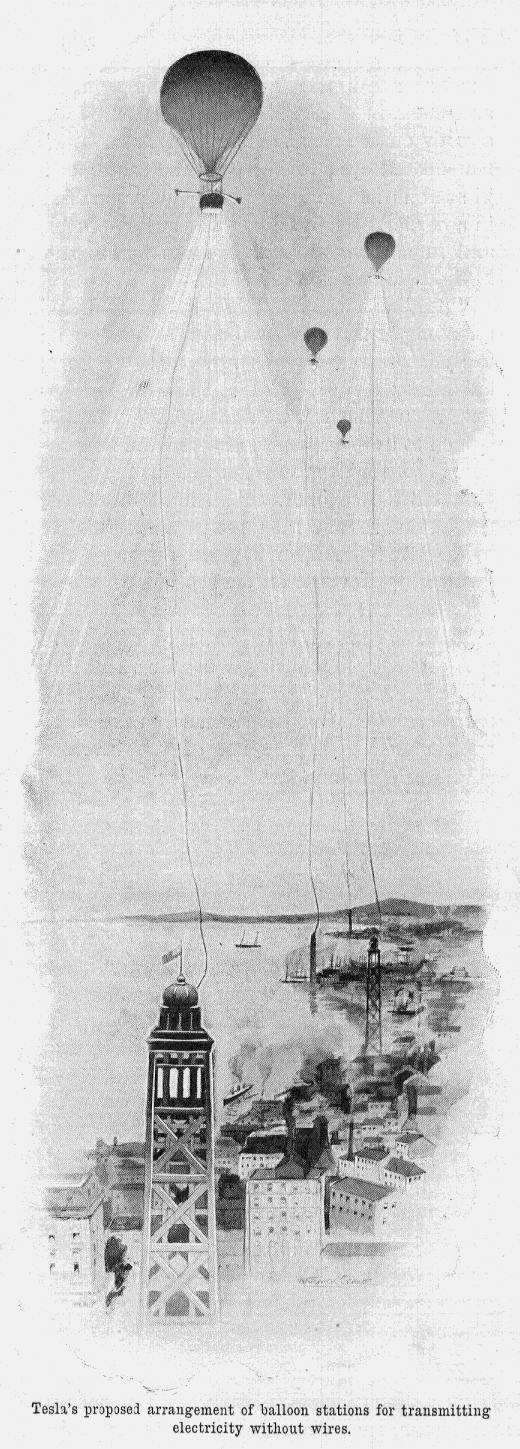
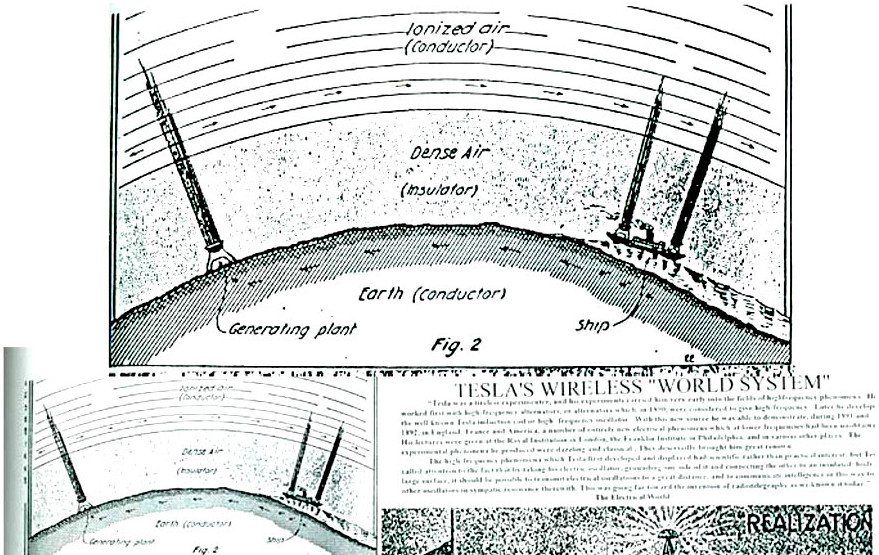
The third workaround which Tesla had was his idea to produce longitudinal electromagnetic waves, which he called “electromagnetic thrusts” having a “non-Hertzian” character. Tesla adamantly believed that just like sound waves, electromagnetic waves should come in two varieties – longitudinal and transverse. Longitudinal waves oscillate along the direction of motion of the wave, while transverse waves oscillate perpendicular to it. In the air only longitudinal sound waves can exist, but in solids both longitudinal and transverse sound waves exist. A simple way of illustrating the difference between these two types of waves is to use a slinky:
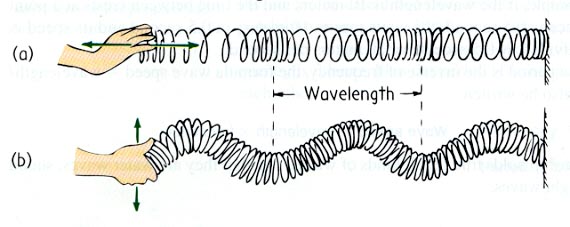
Around 1900 there were in Britain a small circle of “Maxwellians” who were undertaking the mathematical analysis necessary to connect Maxwell’s equations to the experimental findings of Hertz regarding electromagnetic waves. These physicists included Oliver Lodge, Oliver Heaviside, and George F. FitzGerald. Using Maxwell’s equations they proved, among other things, that all electromagnetic waves are transverse and that light is an electromagnetic wave. Although Tesla kept abreast of the work of the Maxwellians and was very adept at mathematics, he had little patience for theoretical analysis of Maxwell’s equations. Likely Tesla saw the work of the Maxwellians as more of an ‘ivory tower’ pursuit and not very practical. Tesla made it very clear he thought that the Maxwellian’s central results were wrong, and he performed experiments with Rumkoff coils which he thought indicated that “non-Hertzian” “electromagnetic thrusts” existed (Carson, pg 125-127).
Despite the scientific consensus today that all electromagnetic waves are transverse, many people still cling to Tesla’s notion that other forms of “non-Hertzian” electromagnetic waves exist. There are many reasons people can be confused about the non-existence of longitudinal electromagnetic waves. It is possible to produce solutions to Maxwell’s equations that have longitudinal waves, but only if one allows for charges to fluctuate – that is , to not be conserved. The law of conservation of charge is one of the core conservation laws of physics (along with the conservation of energy) and has never been shown to be violated. If conservation of charge could be violated, longitudinal electromagnetic waves would be possible – simply imagine a stationary point charge that oscillates in magnitude.
Another reason for confusion is that in physics & engineering many approximations are usually invoked, which sometimes appear to allow for longitudinal waves. For instance, when an AC current is applied to a capacitor, engineers (and physics 102 students) are taught a simplified picture of a uniform electric field between the plates changing directions, while the effects of “edge fields”, the finite speed of light, and magnetic fields are all ignored. These are usually good approximations since it can be shown that the neglected effects are small when the plates are close and the frequencies involved are relatively low, which is usually the case. However, if one takes this approximate picture and then imagines that the spacing between the capacitor plates is very large and then considers the finite speed of light, one can easily be convinced into thinking that longitudinal waves would be produced. It is even possible to write down math with certain approximations that contains such waves. These problems all appear to arise when one considers the effects of a finite speed of light together with approximate equations derived precisely under the assumption that the speed of light is infinitely fast relative to the speed of charges in the system. (Such equations are equations of the quasi-static approximation.) Another source of confusion often discussed in Tesla circles is the fact that in the full solution of the dipole radiator, some of the near-field terms considered in isolation have a sorta-longitudinal-like character. In the full solution, however, the longitudinal character disappears.
Returning to Tesla’s story, with his three ideas (resonance, “flipping radio”, and longitudinal waves), Tesla imagined the following – a tower could be constructed, which, when connected to a large Telsa coil would ‘pump’ waves of current through the Earth. At the right resonance frequency, standing waves would be set up, which would allow for receiving stations to harvest the electrical energy at great distances from the station.
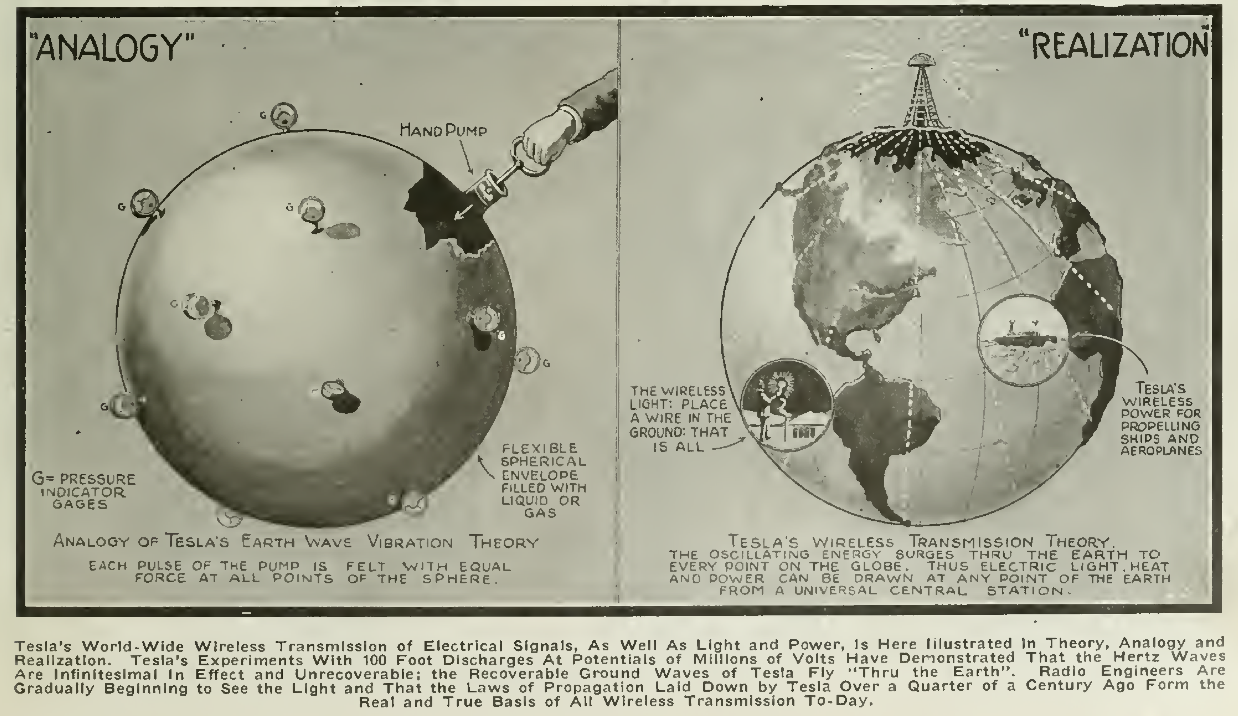
Besides being mistaken about non-Hertzian waves, Tesla committed a grave error here – he assumed that waves could travel through the Earth without loss. The analogy which he gave later in life was that he imagined the Earth as filled with fluid through which waves can travel without loss or dissipation. Carson refers to this (somewhat confusingly) as an “incompressible fluid”. In actuality, electromagnetic or current waves traveling through the Earth have losses of energy (to heat) which are quite large.(see footnote for more explanation) This is why you can’t listen to the radio while driving through a tunnel. Additionally, even if low frequency waves could travel through the earth, they would likely scatter and be refracted in unpredictable ways from boundaries between different layers inside the Earth.
Buoyed by what he perceived as success in laboratory experiments, Tesla traveled to Colorado Springs in 1899 to test his ideas on a larger scale. The result was , in brief, a classic case of someone running amok with confirmation bias. When Tesla achieved a desired result, such as lighting a bulb at a distance of 60 meters from his tower, he interpreted it as a success, while ignoring the fact that he was drawing ridiculously large amounts of power from the local power grid. Because the amount of power his tower drew was so large, Tesla was only permitted to run his tower during the night. There is much confusion about what Tesla actually demonstrated in Colorado Springs. While his Colorado Spring Notes are copious, they are short on precision and detail. For instance, with his famous experiments where he lit bulbs remotely using his tower, by placing wires into the ground, he only noted the distance in two cases (60 and 62 feet from the tower)(Carson, 240). In the vast majority of his writings about his work in Colorado Springs, he emphasized that he had acheieved wireless transmission of power, but did not specify exactly how far it had been transmitted. The claim of biopgrapher John O’Neill that Tesla lit 200 lamps at a distance of twenty-six miles from Colorado Springs has never been substantiated (Carson, 242). Tesla did report receiving signals at distances in excess of one mile, but signals are very different than useful electrical energy. Surprisingly, after his assistant Lowenstein quit, there are no eyewitnesses of Tesla’s work in Colorado Springs. Even when Lowenstein was there, he stayed in the control room and did not see what happened on the receiving end. This is in contrast to Marconi, who regularily performed public demonstrations.
Altogether, Tesla’s work in Colorado Springs is characterized by confirmation bias. When horses were seen to be disturbed in a nearby pasture while his tower was running, Tesla assumed it was because the ground currents induced by his tower were being picked up by their iron hooves (Carson, pg 289). Another example comes from when Tesla made observations of the electrical potential of the Earth during a powerful lightning storm. As the lightening storm approached his tower and then passed into the distance he observed patterns in the electrical potential with a 30 minute interval. He interpreted these patterns as being due to ‘stationary waves’ caused by the lightning which traveled through the Earth, reflected off the crust on the other side of the Earth, and then returned (Carson, pg 270).
In the words of Bernard Carson: “At Colorado Springs, Tesla appears to have sought only evidence to confirm his hypotheses and not look for anything that might diconfirm his theories.”(Carson, pg 300) This is not, however, how science works. In order to prove a scientific hypothesis one must not only present data that supports it, but also rule out other possible explanations for the data. This can only be done through careful focused experimentation, repetition and the elimination of sources of error.
As a consequence of not performing careful tests and not having eyewitnesses, Tesla was hard pressed to convince investors of the value of his proposed system. He tried to convince numerous New York investors, including John Jacob Astor and his close ally George Westinghouse, but came back empty handed. He took to writing sensational newspaper stories to garner support from the public.
The man who came to Tesla’s aide was the great industrialist J.P. Morgan. In order to get J.P. Morgan to invest in Wardenclyffe, Tesla sold Wardenclyffe as a project in radio, promising that he would send signals across the Atlantic in 6-8 months time. At the time, the furthest his rival Marconi had sent signals was 67 miles. Investors like Morgan were reluctant, since Marconi held many strong patents in wireless, but Morgan likely saw that Tesla’s technology might be significantly different to circumvent those patents. After much haggling and exchanging of letters, Morgan agreed to loan him $150,000 to build the Wardenclyff tower. Ironically, despite Morgan being the only investor willing to give Tesla a loan, and Tesla referring to him as “the Great Man”, Morgan is usually vilified as a stingy greedy banker in many present day accounts of this story.
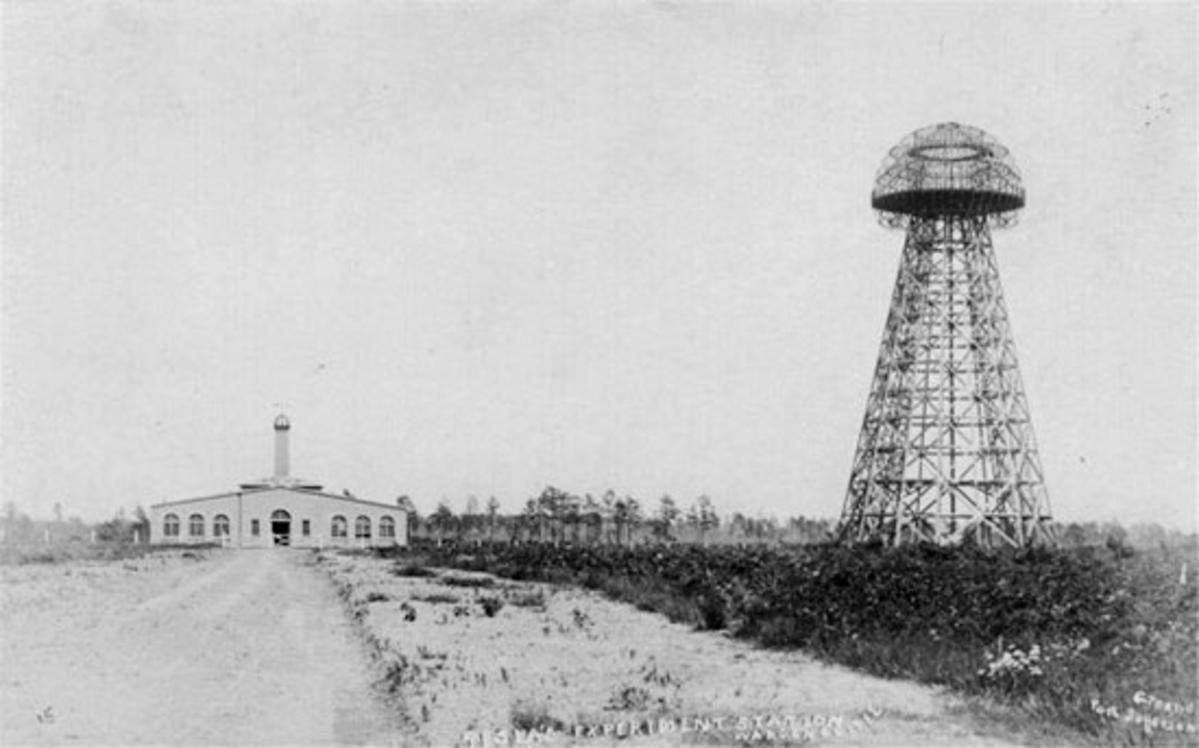
In 1901, a year after securing funds from Morgan, Tesla was living his dream. The Wardenclyffe tower was under construction, he had the financial backing of “the Great Man”, and he was living “like a millionaire” in the Astoria hotel (Carson, pg 330). The great Wardenclyffe tower rose majestically above the Earth, its signature dome pointing to the heavens. An expansive laboratory complex stood ready to be filled with generators and equipment. Below Wardenclyffe, a series of carefully constructed tunnels filled with metal pipes would “grip the Earth” and shake it, sending current waves traveling across the planet. All of these illusions of success would be ephemeral however. On December 12th, 1901, Marconi succeeded in transmitting a signal across the Atlantic. With his patents in hand, Marconi captured the limelight and became forever known as the inventor of radio, stealing credit from his predecessors and from Tesla. To Tesla’s dismay, “the Great Man” refused to invest more money into Wardenclyffe. Morgan was at that time busy reorganizing the railroad and steel industries of the country and viewed Wardenclyffe as a side project. His reasons for not continuing to invest in Tesla are clear – he had already spent $150,000 and Tesla had failed to deliver on his promise of transmitting across the Atlantic and had been beaten by Marconi. Later, Tesla would give his own explanation why “the Great Man” refused to invest. At that time the wireless field was in the mist of a speculative bubble and in the words of Tesla Morgan “would not touch it with a 20-foot pole”. Indeed the wireless field in 1901 was rampant with investor mania, get-rich-quick schemes and hucksters who simply took investor’s money and ran (Carson, pg 348). The idea that Morgan turned down supplying additional funding because “free energy” wouldn’t be profitable (as suggested at the end of the film The Secret of Nikola Tesla) doesn’t make sense – Tesla had sold the project to Morgan as a wireless communications tower, not as a means of producing and transmitting energy (yet alone free energy).
For the next few years, Tesla struggled to piece together money to finish the Wardenclyffe project. The tower and underground tunnels were built, but trial runs of the facility yielded no meaningful results, other than scaring the neighbors with flashes of electrical streamers. Tesla’s estimated costs for the completion of the project ballooned from $1 million to $2 million as he increased the number of steam turbine generators he thought necessary for the system to work. With no meaningful results to show, investors turned Tesla down, preferring to invest in technologies that had been proven, such as radio. Angry that investors failed to recognize his genius Tesla became depressed.
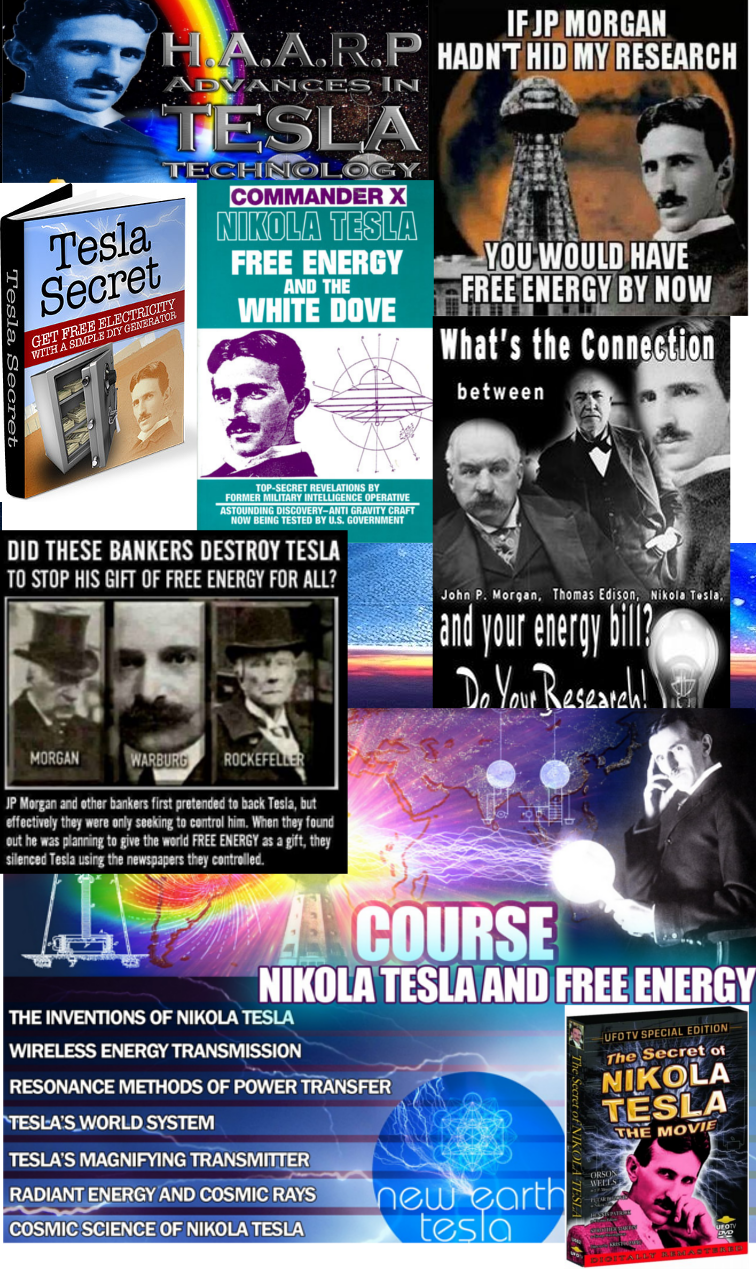
The story of Tesla’s decline is indeed sad, but it needs to be taken as it is. People often do not want to recognize their failures – so was Tesla – to the end of his life he insisted his genius was not understood. People are also reluctant to recognize the failures of those they admire or idolize. That is why it is easy to buy into Tesla’s excuse — if only investors hadn’t been greedy or had understood Tesla’s genius, then Wardenclyffe would have worked. Excuses are easy to invent – if only he had more horesepower, then it would have worked. If only the tunnels had been deeper, the tower higher, then it would have worked. People find these explanations tantalizing, since wireless electricity does exist on small scales, therefore why should it not be possible on large scales as well? The problem is that Tesla neglected to carefully study how things scale – based on his ability to light a bulb at a distance of 60 feet, he erroneously calculated that using the same method he should easily be able to light one at a distance of many miles. Today well established and elementary physics tells us you can’t easily scale such systems as Tesla thought. Still, many persist in insisting Tesla must have been right. Apparently some people find it easier to believe that Tesla had secret knowledge which turns hundreds of years of careful scientific research on its head than to accept that Tesla might have been wrong.
The fact is that while scientific knowledge as a whole progresses, some do not progress with it. When the Maxwellians used Maxwell’s equations to show that electromagnetic waves were always transverse, some such as Tesla refused to accept it. Similarly in the 1800s many of the scientific elite were slow to accept the atomic hypothesis, despite growing evidence for it (most notably, Earnest Mach, who refused to accept the idea even after Einstein used atoms to explain Brownian motion in 1905). Similarly, many of the scientific elite of the early 1900s (including Einstein) refused to accept the weirdness of quantum mechanics.
The fact is, like many of the electrical engineers of his day, Tesla harbored ideas about electromagnetism that were if not fully wrong, at least partially so – radio transmission doesn’t work like a telegraph circuit, electromagnetic waves are not like sound waves, and it isn’t possible to create current waves that pass through the earth for thousands of miles unimpeded. Yet somehow, some of his ideas persist in people’s imagination today — we feel the pain of Tesla’s failure, and we seem to hear his voice traveling through the ether, asking us to give him one more chance. The fact that people are still influenced by Tesla’s ideas today is testimony to his power to dream – and his powers to use his friends in the press to promote his dreams to the public (Carson, pg 408). Today Tesla “free energy” websites and books can be found all over the web. There is even a team of Russians raising money to try to rebuild Tesla’s tower, using the same misguided ideas (although recast with an additional layer of crackpot math) – such as standing waves in the Earth’s interior, etc. I suspect that when this project fails, we will hear the same pleas as we have heard whenever “free energy” schemes fail – it would have worked if only we had more funding, it would have worked if not for a corporate conspiracy, it would have worked if only the scientific establishment had understood the genius of our crackpot math. The minds of men are easily led into believing such pleas, but nature cannot be fooled.
Reference: Tesla: Inventor of the Electrical Age W. Bernard Carlson, 2014.
Footnote: added after publication. To clarify, the amount of loss for EM waves traveling through the Earth depends on the type of material involved, be it salt water, wet soil, dry soil, or rock. More conductive media (such as wet soil, salt water) are harder to transmit EM waves through due to screening – in fact all frequencies below the plasma frequency are heavily absorbed / screened. On the other hand, dense non-conductive media like rock can be hard to transmit through due to absorption. Low frequency waves called ground waves allow kHz signals to propagate for perhaps hundreds of miles from a typical radio transmission tower. What is written on Wikipedia about this subject is perhaps misleading – ground waves travel above the ground rather than in the ground. Extremely low frequency waves (1 – 3000 Hz) can travel great distances even through rock or salt water, however. Perhaps I will write another post quantifying this more exactly. Such extremely low frequency (ELF) waves are used to communicate with subs. Creating such low frequency waves is difficult and requires very long antennas. Tesla discussed low frequency resonances of the Earth, but the Wardenclyffe tower and Colorado Springs Tesla coil operated at much higher frequencies.